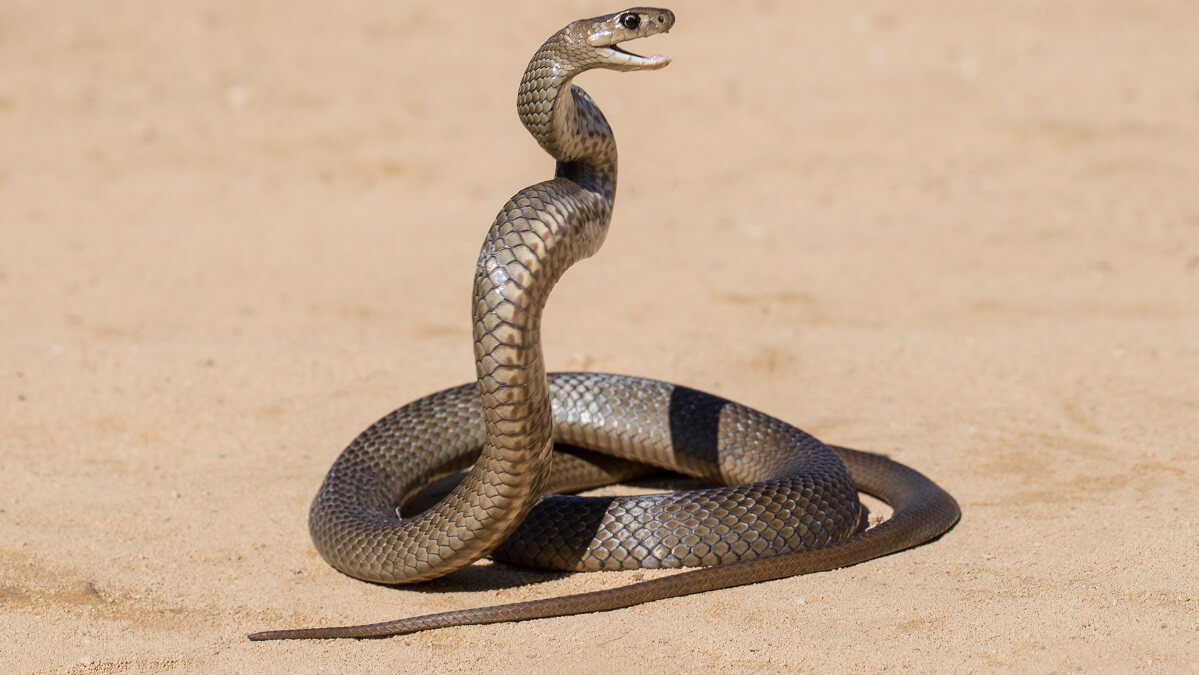Summer might be on the way out, but recent high-profile incidents highlight how important it is for Australians to know what to do in the case of a snake bite.
Australia is home to some of the most venomous snakes on the planet, including the world’s most venomous species, the inland taipan.
It’s something of a badge of honour for most Aussies. We’ve all heard of overseas tourists too scared to come to Australia for fear of encountering our deadly wildlife.
But as most Australians know, actually encountering one of our deadly snakes in daily life is a rather rare event.
Read: Jellyfish are among the world’s weirdest animals
A rare event, but not an impossible one. The need to stay vigilant around snakes was highlighted earlier this week when a Queensland man in his 60s died from a suspected snake bite he received at his home in the Lockyer Valley.
Although deaths from snake bites are rare, an average of between one and two people will die from snake bite injuries each year.
And the current wet and humid weather has created the perfect conditions for snakes to breed and become more active.
Australian Medical Association (NSW) president Dr Michael Bonning told the Herald Sun that residents need to keep a lookout for venomous snakes and refresh their knowledge of snake first aid.
“Encountering one of Australia’s deadliest reptiles while on a bush walk, or even in your own home or backyard can be frightening,” he said.
“Although snakes don’t go out of their way to harm humans, if frightened they can strike so it’s important to know what to do in these instances.”
Read: Six completely harmless-looking animals that are deadly
There are anti-venoms available for every type of Australian snake, but it’s crucial to seek treatment as soon as possible.
Dr Bonning says the very first thing you should do if you or someone near you is bitten is follow the DRSABCD – which stands for Danger, Response, Send, Airway, Breathing, CPR and Defibrilation.
First check for any immediate danger and ensure the snake is no longer in view. Next, check that the victim is responding to audio or visual stimulus (clicking fingers, etc); then send for help if possible.
Check the victim’s airways next, clearing any obstructions and confirm the patient is breathing. Check the patient’s pulse and carry out CPR or heart defibrillation as required.
Read: Australia is the lucky country when it comes to snakes
“Once you follow DRSABCD, immediately call 000,” Dr Bonning says.
“Time is critical when it comes to venomous bites. While you wait for an ambulance … keep the victim as calm and still as possible.”
According to St John Ambulance Service, symptoms of a potential venomous snake bite can include delayed pain on the bite site, swelling, bruising or bleeding, swollen and tender glands, faintness, nausea and vomiting, headache, blurred vision, drooping eyelids, difficulty speaking or swallowing, limb weakness or paralysis, dark urine, chest pain, and difficulty breathing.
St John says not to wash the venom off the skin as it may aid in identification; not to cut the bitten area and try to suck the venom out of the wound; not to use a tourniquet and not to try to catch the snake.
Do you often see snakes in the wild? Have you ever been bitten? Let us know in the comments section below.


Who proof read this Article – you had better write a retraction, “cut the wound and suck out the Blood” Cowboys did this in the 1800’s, it’s been discredited by the WHO…
Gary the article says “Not to cut the bitten area and try to suck the venom out of the wound”
Did you forget the steps of applying a dressing to the bite sight then using a compression bandage to the whole affected limb?
The paragraph about the St John’s advice needs to be re-written to clearly state “DO NOT CUT and SUCK!”
Brad Lockyer requires some remedial training BEFORE he writes such articles!!
OOPS! I forgot about using a splint to immobilise the affected limb after bandaging..
What happened to keeping the patient still and applying a pressure bandage the full length of the affected limb, also marking the bandage over the bite marks to make it easier for the medics to find the bite. Certainly following DRABC is essential, but keeping the patient still to slow the circulation of the poison is essential.
The paragraph referred to by Gary Eykhof, although grammatically correct, is very confusing and needs rewriting in an easy to understand format.
We all know that articles like this are just “vehicles” for ads and click-bait, but can we cut the palaver at the beginning and the over-wordy paragraphs? Just tell us what the headline says, in more detail.
And, it seems some facts are missing – dangerously.
Those trained in correct (current) CPR techniques must be wondering??